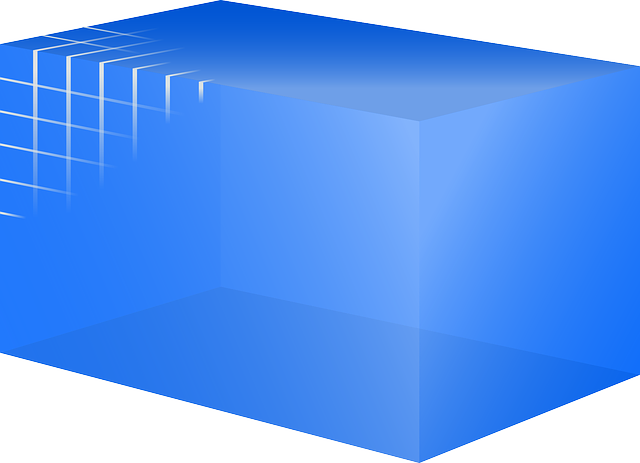The text introduces a comprehensive FAQ (Frequently Asked Questions) structured data outline designed to improve user experience and search engine optimization (SEO). By organizing FAQs in a structured format, it aims to provide clear answers and enhance accessibility. Implementing the FAQPage schema helps websites increase online visibility by enabling search engines to display rich, interactive snippets on SERPs, reducing click-through rates and saving users time. To maximize effectiveness, content should be logically organized, with concise and specific answers, using the Schema's FAQPage Type and optimized for readability. Regular updates and monitoring of search trends ensure continuous improvement, enhancing user engagement and website visibility on SERPs through rich FAQ results.
Adding the FAQPage schema to your website’s content is a powerful strategy to boost user engagement and optimize search engine results pages (SERPs). By implementing this structured data, you unlock rich FAQ snippets in search results, providing users with quick answers. This article guides you through the process, from understanding FAQ structured data to best practices for continuous improvement. Discover how this simple step can enhance your site’s visibility and user experience.
- Understanding FAQ Structured Data
- Benefits of Implementing FAQPage Schema
- How to Structure Your FAQ Data for Optimal Results
- Incorporating FAQ Schema into Existing Content
- Measuring Success and Analyzing User Behavior
- Best Practices for Continuous Improvement
Understanding FAQ Structured Data

Benefits of Implementing FAQPage Schema

Implementing the FAQPage schema is a strategic move for any website aiming to boost its search engine visibility and user experience. This structured data format allows search engines to understand and present your content in a rich, interactive FAQ snippet on the SERP (Search Engine Results Page). By utilizing this schema, you’re essentially offering a concise, organized overview of frequently asked questions directly to your audience, reducing the need for them to click through to your site.
This optimization technique has multiple advantages. It increases user engagement by providing quick answers and saving them time. Moreover, FAQPage structured data can enhance your website’s click-through rate (CTR), as users are more likely to interact with useful, relevant information presented in a clear, compact manner. Accordion schema SEO, when implemented correctly, allows you to organize your FAQs logically, ensuring that the most pertinent questions appear first, thus improving user satisfaction and guiding them through the content effectively.
How to Structure Your FAQ Data for Optimal Results

To optimize your FAQ structured data for maximum impact, organize your content in a clear and logical manner. Begin by identifying the most relevant questions that users frequently ask about your products or services. Each question should be concise and specific to ensure accurate matching with user queries. Structure your answers accordingly, providing detailed yet succinct responses that address each question thoroughly.
Utilize the Schema FAQPage Type to define the content’s structure, allowing search engines to recognize and display your FAQ in rich snippets. Implement FAQ Snippet Optimization techniques by crafting compelling meta descriptions and titles for each entry. Ensure consistency in formatting, using headings, bullet points, or numbered lists to enhance readability. By following these practices, you’ll improve user engagement while enhancing your website’s visibility in search engine results pages (SERPs).
Incorporating FAQ Schema into Existing Content

Incorporating FAQ Schema into your existing content is a strategic move to enhance user experience and search engine optimization (SEO). By implementing the FAQ Structured Data, you provide search engines with a clear structure for your frequently asked questions, allowing them to display rich snippets in the search results. This not only makes your website more visible but also offers users a direct, at-a-glance view of the answers to their queries, increasing engagement.
The process involves identifying relevant FAQs within your content and structuring them using the FAQ Page Type schema. This includes organizing questions and answers in a hierarchical manner, often presented in an accordion format for easy navigation. FAQ Snippet Optimization techniques, such as utilizing specific keywords and ensuring concise yet comprehensive answers, further enhance the visibility of these rich snippets. Accordion Schema SEO plays a crucial role in improving user interaction by allowing visitors to interact directly with the content, fostering higher engagement rates.
Measuring Success and Analyzing User Behavior

Measuring success of implementing FAQ Structured Data involves tracking key performance indicators (KPIs) such as click-through rates (CTRs), average session duration, and bounce rates on FAQ pages. By analyzing user behavior through tools like Google Analytics, you can gain insights into which FAQs are most popular, how users navigate the page, and where they exit. These data points help optimize the FAQ structure and content for better user engagement.
Additionally, monitoring user satisfaction through surveys or feedback forms can provide qualitative data that complements quantitative metrics. Understanding how users interact with your FAQPage schema encourages continuous improvement in presenting information. Whether enhancing existing FAQs or adding new ones, knowing what resonates with your audience is crucial for effective Accordion Schema SEO and ensuring your content captures valuable real estate in search engine results pages (SERPs).
Best Practices for Continuous Improvement

To ensure continuous improvement with your FAQ Structured Data, regularly update and expand your schema content as your product or service offerings evolve. Keep an eye on search trends and user queries to identify new questions that should be addressed. FAQ Snippet Optimization techniques, such as using clear, concise answers and including relevant keywords, will enhance the visibility of your rich FAQ results in SERPs. By integrating these best practices, you can provide valuable insights to users while also increasing your website’s eligibility for featured snippets.
How to Add FAQ Schema involves structuring your content properly with HTML markup. Utilize the `FAQPage` schema type and ensure each question-answer pair is clearly defined within “ and “ tags. Verifying your structured data using tools like Google’s Structured Data Testing Tool can help identify any issues or missing elements, ensuring a seamless user experience and maximizing the potential for rich FAQ Results.
